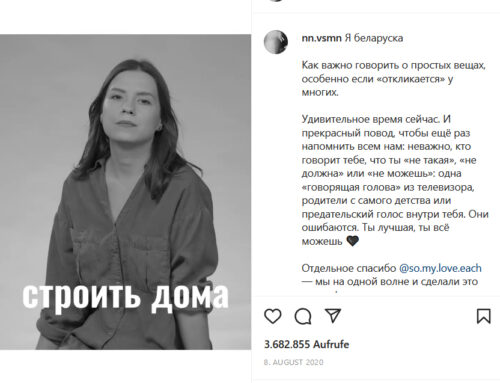The video PEGIDA-ABENDSPAZIERGANG (PEGIDA EVENING WALK) is a mobilisation video in support of the protest marches organised by Pegida Dresden and gives an insight into the xenophobic movement’s self-perception.
In their video PEGIDA-ABENDSPAZIERGANG (PEGIDA EVENING WALK), the islamophobic and xenophobic organisation “Patriotic Europeans against the Islamisation of the West” – abbreviated “Pegida” – calls on its supporters to join in a protest march through the city of Dresden. As the organisation’s leaders, first and foremost Lutz Bachmann, have in the past repeatedly urged their followers not to talk to the so-called “lying press”, initially little to nothing was known about the motives of the movement and its members. At the same time, however, the organisation and its supporters are all the more open and communicative on social media, especially in Facebook groups which serve as the movement’s central communication tool. More specifically, Pegida’s decentralised organisational structure is reflected in Facebook groups which operate independently from one another on a regional level. This fragmented user base as well as the multitude of unofficial or even outright fake accounts make accurately evaluating the movement, its beliefs and statements a particularly difficult task. The video PEGIDA-ABENDSPAZIERGANG was posted on Pegida’s “official” Facebook page on March 8, 2015 – it remains unclear which, if any, regional groups are represented by the page. Until the page’s deletion by Facebook on July 19, 2016, it served as the movement’s most active communication hub with more than 200,000 members.
The YouTube channel the video was uploaded to the day before the protest march is named “Aufbruch” – a word marking a beginning, a fresh start, the idea of departing on a journey into uncharted territories, towards something new or different, while at the same time carrying a romantic, noble undertone.
This thematic approach – the portrayal of a historic breakthrough in the making – characterises the entire video. The theme is initially introduced in the form of the protesters themselves, who serve as the central motif: the crowd of people is presented as mighty, great and powerful, as a force to be reckoned with. Thus, the metaphorical river of protesters flows toward the viewer through the street canyons of Dresden, their boundaries condensing the image space – an image space that is, in turn, filled to the brim by the protesting masses. Through the implementation of a time-lapse effect, the protest march takes on a rather abstract character, as individuals become unrecognizable, gaps in their rows indiscernible. Halfway through this sequence, the time-lapse effect is further accelerated: while the seemingly never-ending stream of people suddenly appears even more momentous, the images’ affective impact on the viewer, itself highlighted by the music, is bolstered as well. The volume of the background score increases, and the so far slowly meandering piano tune is drowned in a wave of violins and choral voices. This mode of presentation also reflects Pegida’s self-perception as a catalyst, a driving force of inevitable political change: “We are many”, such is the underlying message, “and our numbers keep on growing”.
The semantics of an important historical moment are established in the video’s opening moments. In the first shot we see a stone bench in front of the walls of the Albertinum, a historically significant building in Dresden’s Old Town. Then, accompanied by the aforementioned slow piano tune, an intertitle is displayed: “What will we tell our grandchildren twenty years from now?” – a question that is answered not long after, close to the video’s halfway mark, when the river of protesters overflows to the swell of choral voices: “We will tell them that we were part of it”. The image of the grandfather who through his involvement in current affairs ensures a better future for his grandchildren is as dramatic as it is stereotypical – political action of the present is presented as an event of the past, an event that, somewhere down the road, is looked back upon as a historically significant waypoint. The black-and-white style further emphasises this intended historical distance. Pegida thereby portray their rise in popularity as an event of national importance and historical significance, and the video ends with the seemingly only logical consequence: the appeal to “Join us”. Pegida’s apparent self-perception as a political force of nature apparently resonates well with the movement’s followers. In the comments there is talk of “goose bumps” and a “magical atmosphere”. One commentator even quotes Victor Hugo: “Nothing is more powerful than an idea whose time has come!”
In contrast to the otherwise rather ineptly produced film clips shared in social networks closely affiliated with Pegida, the present video stands out, as it is, by comparison, relatively complex and meaningful. The originator, however, is nonetheless just a single dedicated participant. Therefore the video does not express a mobilisation strategy employed by Pegida’s leading figures, but rather gives an unfiltered insight into the self-perception of the movement’s supporters who otherwise remain so secretive.
Vincent Abert



